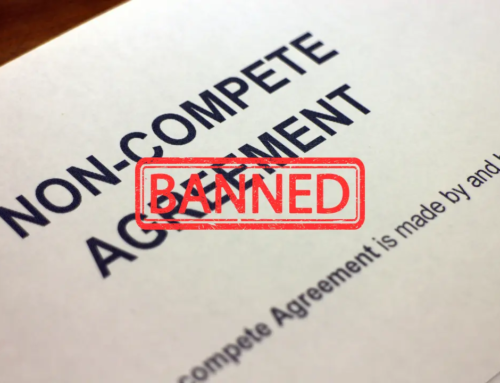Update August 11, 2023: The Equal Employment Opportunity Commission (“EEOC”) released its highly anticipated Notice of Proposed Regulations (NPRM). Employers and the general public have 60 days (until October 10) to comment on the proposed regulations, which can be accessed through the Federal Register. Once the comment period closes, the EEOC must issue final regulations by December 29, 2023.
President Joe Biden signed the Protecting Workers and Families Act (PWFA) on December 29, 2022, and it’ll take effect on June 27. To provide clarity around the law, The Equal Employment Opportunity Commission (EEOC) has presented a summary highlighting the key provisions.
What is the PWFA?
According to the EEOC, the PWFA outlines that “covered employers” must offer “reasonable accommodations” for known limitations associated with pregnancy, childbirth, or related medical conditions, unless providing such accommodations would impose an “undue hardship” on the employer. It’s important to note that this requirement specifically pertains to accommodations and does not address other forms of discrimination or termination based on pregnancy, childbirth, or related medical conditions, which are already prohibited by existing laws enforced by the EEOC.
The EEOC emphasizes that the PWFA does not supersede more stringent federal, state, or local laws designed to safeguard workers impacted by pregnancy, childbirth, or related medical conditions. Over 30 states and cities have enacted laws that mandate accommodation for pregnant employees. Consequently, companies must adhere to the guidelines set forth in Title VII, the Americans with Disabilities Act, the Family and Medical Leave Act, and the Providing Urgent Maternal Protections for Nursing Mothers Act, in addition to the PWFA’s provisions.
Who’s affected by the PWFA?
The PWFA protects employees and job applicants of “covered employers” who experience known limitations associated with pregnancy, childbirth, or related medical conditions. Covered employers consist of private and public sector organizations with a minimum of 15 employees, along with Congress, federal agencies, employment agencies, and labor organizations.
What’s considered reasonable accommodation?
Reasonable accommodation refers to changes made to the work environment or usual work practices.
Some examples of reasonable accommodations include:
- Allowing employees to sit or drink water as needed.
- Providing more convenient parking options.
- Granting flexible work hours.
- Offering additional break time to use the restroom, eat, and rest.
- Supplying properly fitted uniforms and safety gear for staff.
- Providing leave or time off to recover after childbirth.
- Excusing employees from physically demanding tasks or activities involving exposure to substances that are unsafe during pregnancy.
Employers are obligated to provide reasonable accommodation unless doing so would result in an undue hardship on their operations. Undue hardship is defined in similar terms as Title I of the Americans with Disabilities Act (ADA), 42 U.S.C. §§ 12111–12117, as an action “causing the employer significant difficulty or expense when considered in relation to the size, financial resources, nature, or structure of the employer’s business.”
What else does the PFWA do?
Covered employers are obligated to fulfill additional responsibilities under the law. These responsibilities aim to protect employees and ensure that their rights under the PWFA are upheld by covered employers.
For instance, under the law, covered employers cannot:
- Require an employee to accept an accommodation without a discussion about the accommodation with the employee and employer.
- Refuse to offer a job or other employment-related opportunities to qualified employees or applicants based on their need for reasonable accommodation.
- Require an employee to take leave if a reasonable accommodation can be provided that would allow the employee to continue working.
- Retaliate against an individual who reports or opposes unlawful discrimination under the PWFA or participates in PWFA proceedings, such as investigations.
- Interfere with the rights granted to individuals under the PWFA.
What’s Next for the Law?
Keep an eye out for further guidance, as the EEOC is mandated to establish regulations for the implementation of the PWFA. The EEOC will release a proposed version of the PWFA regulations, allowing the public to provide input and offer comments before the regulations are finalized. In the meantime, companies should maintain regular communication with professional advisors to stay informed and prepared to navigate the evolving requirements of the law.





